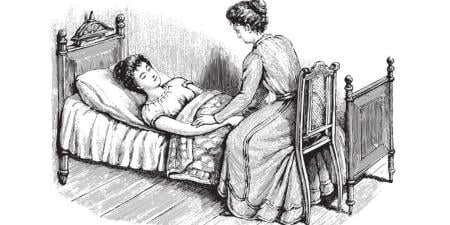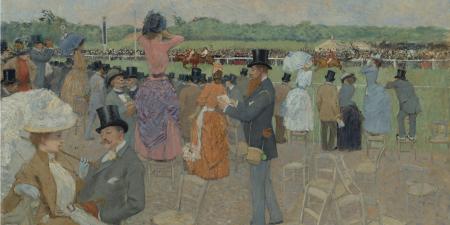Buhr GT, White HK. Difficult behaviors in long-term care patients with dementia. J Am Med Dir Assoc. 2006;7(3):180-192.
Dementia is a condition in which individuals progressively lose cognitive function and, as a result, often develop difficult behaviors that cause stress for both patients and their caregivers. These behaviors, collectively known as behavioral and psychological symptoms of dementia (BPSD), include screaming, wandering, resisting care, hitting, and psychological symptoms such as depression, psychosis, and sexual disinhibition [1]. BPSD is prevalent in nursing homes where 67-78 percent of patients have dementia and, of them, 76 percent exhibit BPSD [1]. In fact, it is common for patients to be institutionalized because of BPSD, so clinicians must become proficient in assessing and managing these symptoms.
Assessment
Buhr and White state that the first critical step in managing BPSD is taking a detailed patient history and physical [2], which can uncover treatable medical illnesses, such as delirium, urinary tract infection, medication side effects, depression, and changeable environmental factors that contribute to the symptoms. Physicians must also look beyond the history for connections between patient experiences and behavior. The authors provide an example in which an 80-year-old woman with Alzheimer's disease was agitated and yelled at the staff [3]. When asked why she was angry, her answers did not address the question. Over time the staff realized that the patient grimaced and yelled out whenever her knees were manipulated. The lesson of this case was that pain and discomfort are not always reported by a patient and may only manifest behaviorally (e.g., in grimacing). When behavior suggests that pain may be present, though unreported by the patient, regular doses of acetaminophen can be scheduled to alleviate the pain. BPSD may also be exacerbated by auditory or visual misinterpretations and can be lessened by the appropriate use of hearing aids or glasses [2].
In attempting to identify patterns or triggers of BPSD, physicians should ask that detailed records be kept of the frequency, duration, intensity, time of day, and antecedents [2]. Examples of BPSD-associated patterns are over- and understimulation; an environment that lacks activity can cause a patient to be lethargic, whereas an environment with too much activity (such as noise) may trigger BPSD. Medications, caregivers, or even hunger can also be triggers [1].
Nonpharmacological Treatments
Buhr and White state that treatment should begin with nonpharmacological approaches [2]. They cite five care goals for the patient with dementia: "to feel safe, to feel comfortable, to experience a sense of control, to experience minimal stress with adequate positive stimulation, and to experience pleasure" [2, 4].
The authors suggest several techniques for achieving the above care goals, all of which center on patient-caregiver or patient-environment interactions. First, they recommend that caregivers be relaxed and flexible and that they smile and maintain eye contact with the patient [2, 5]. Another technique, coined "hand under hand," refers to the caregiver's placing his or her hand underneath the patient's hand while guiding the patient through an activity. This hand-under-hand position reduces the patient's resistance to direction and provides adequate support. When a patient does show resistance, caregivers should remember that arguing or reasoning will not change the unwanted behavior. Instead, the caregiver should acknowledge the patient's emotions and employ strategies of distraction and redirection [5-7]. Consistency in routines and staff assignments are critical.
In support of these care strategies, Buhr and White cite a study examining the effects of behavior management skills training on nursing home staff. The investigators found that the training reduced the use of ineffective strategies (such as arguing with patients) and that the improved skills were maintained 6 months later [6].
BPSD events often occur during bathing, an activity that is very personal for the patient and, in an institutional setting, can be one in which the patient feels particularly exposed. Buhr and White relate the case of a 75-year-old woman with moderate dementia who was combative toward nursing home staff whenever they attempted to give her a bath. After communicating with the patient's daughter, the staff learned that the daughter typically washed her mother with a wet cloth (versus placing her in a tub or shower). The message here was that learning the preferences of the patient and respecting them when possible can reduce the incidence of obstructive behaviors [8].
In addition to modifying patient-caregiver interactions, the authors discuss beneficial environmental changes. Stimulated presence therapy, a technique that uses a recorded audiotape of a family member discussing happy memories with the patient, has been shown to reduce agitation [2]. Other studies have shown that calming music, 10-minute hand massages, and decorating specific areas of a nursing home can be beneficial.
Finally, Buhr and White suggest that not all behaviors require "treatment." To illustrate this point, the authors describe the case of an 82-year-old nursing home resident with moderate to severe Alzheimer's dementia who wrapped her stool in toilet paper and placed it in her dresser drawer. What staff action is appropriate? The authors believe that since her actions were not dangerous (and reasoning will not help), staff should not "treat" (or attempt to change) her behavior. Rather they should check regularly for stool and dispose of it properly [8].
Pharmacological Treatments
In situations where none of these techniques adequately controls BPSD and the patient's behavior is putting himself or others at risk, trials of pharmacological interventions are appropriate. A recently formed guideline panel of the American Academy of Family Physicians and the American College of Physicians (AAFP-ACP) reviewed the five FDA-approved drugs for treatment of dementia and found that, while some clinical trials reported statistically significant improvements in behavior, the improvements often were not clinically significant or their significance could not be determined [9]. Considering the cost and potential side effects associated with these drugs, their use should be evaluated on a case-by-case basis.
Discussion
This article advocates the use of nonpharmacological treatments for patients with dementia, but it also recognizes the need for pharmacological interventions in certain situations. This approach seems reasonable, but it also raises certain questions. While we know there is a growing focus on patient-centered treatments [10], it is difficult to identify, for example, the specific predictors or variables for successful interventions. As illustrated by the towel bath example, a successful patient-specific intervention depends on many factors, ranging from the patient's environment (particular caregiver, particular time of day, etc.) to exactly how the intervention is carried out (towel bath technique, type of soap, particular towel, etc.).
Next, how practical and efficient is it for nursing homes to focus predominantly on nonpharmacological treatments? In the behavior management training study that Buhr and White cite, staff decreased their use of ineffective behavior management techniques but did not increase their use of effective strategies [6], suggesting that implementation of new techniques may be difficult in certain situations. In a nursing home with high staff turnover, education and implementation are even more difficult, especially with techniques that require a substantial amount of training.
Finally, a significant—but unaddressed—concern is the lack of financial resources for nonpharmacological treatments. Drugs have the benefit of being directly reimbursed; training and time for the types of interventions proposed by the authors are frequently not reimbursed. Similarly, devices that can help prevent difficult behaviors—hearing aids, for example—do not qualify for reimbursement [11].
In light of the number and variety of nonpharmacological treatments being endorsed—from standard (e.g., behavioral) therapies to alternative (e.g., aromatherapy) strategies to brief, interpersonal psychotherapies [12]—professionals who care for the elderly could use a standardized guide to nonpharmacological treatments, similar to the American College of Physicians' current Pharmacological Treatment of Dementia [9]. An overview of nonpharmacological treatments that are most effective in specific situations and those that are ineffective and even potentially harmful would be helpful. Yet this idea of standardization does not conform completely to the idea of patient-centered management because different patients may warrant different nonpharmacological treatments based on their clinical stories. A compromise must then be made to generate guidelines that combine standardized treatment for minimum safety and quality assurance with the flexibility that allows for personalized care for each patient.
References
- Buhr GT, White HK. Difficult behaviors in long-term care patients with dementia. J Am Med Dir Assoc. 2006;7(3):180-
-
Buhr, 181.
-
Buhr, 189.
- Ryden MB, Feldt KS. Goal-directed care: caring for aggressive nursing home residents with dementia. J Gerontol Nurs. 1992;18(11):35-42.
- Burgener SC, Barton D. Nursing care of cognitively impaired, institutionalized elderly. J Gerontol Nurs. 1991;17(4):37-43.
- Burgio LD, Stevens A, Burgio KL, Roth DL, Paul P, Gerstle J. Teaching and maintaining behavior management skills in the nursing home. Gerontologist. 2002;42(4):487-496.
-
Buhr, 182.
-
Buhr, 190.
- Qaseem A, Vincenza S, Cross JT Jr, et al. American College of Physicians/American Academy of Family Physicians Panel on Dementia. Current pharmacologic treatment of dementia: a clinical practice guideline from the American College of Physicians and the American Academy of Family Physicians. Ann Intern Med. 2008;148(5):370-378.
-
Kitwood T. Dementia Reconsidered: The Person Comes First. Philadelphia, PA: Open University Press; 1997.
- Cohen-Mansfield J. Nonpharmacologic interventions for inappropriate behaviors in dementia. Am J Geriatr Psychiatry. 2001;9(4):361-381.
-
Douglas S, James I, Ballard C. Non-pharmacological interventions in dementia. Adv Psychiatr Treatment. 2004;10:171-177. http://apt.rcpsych.org/cgi/reprint/10/3/171. Accessed May 8, 2008.



